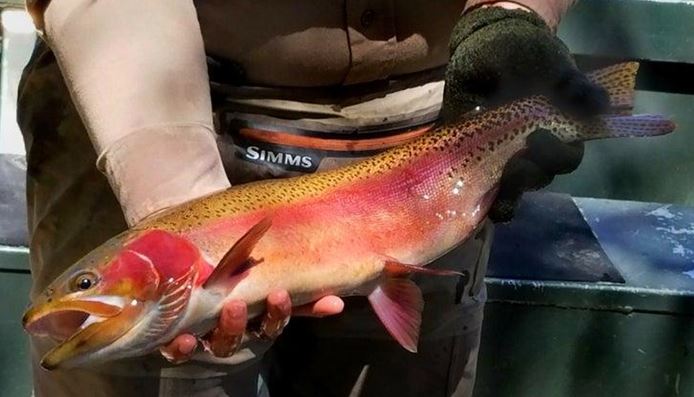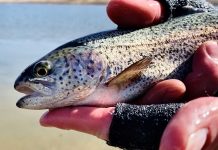
DENVER, June 18 (UPI) — Wild rainbow trout are returning to the mountain rivers of Colorado for the first time in more than 20 years after an invasive parasite eradicated them and some other species in the Rocky Mountain West.
In 2015, wild rainbow trout were discovered in the Gunnison River in southwestern Colorado. These trout had a resistance to “whirling disease,” a parasite called Myxobolus cerebralis, carried by tube worms, that attacks the cartilage of developing young fish. In salmonid fish, especially rainbow and native cutthroat trout, the disease attacks balance centers in the “fingerling” fish’s skull and causes the fish to develop a bizarre tail-chasing whirling behavior.
Fish also develop deformed spines, heads and tails. Fish biologists look out for trout with “dolphin heads” to identify victims of the disease.
The new rainbow trout in the Gunnison River caught the attention of Colorado Parks and Wildlife fish scientists, who quickly captured them with nets and bred 40,000 new super-trout hatchlings.
With help from volunteers from the local Trout Unlimited branch, fishery agents clipped small fins on the fishes’ underside for future identification, and in 2016 the young trout were released into another Colorado mountain river, the Arkansas.
Between 1995 and 1998 the number of rainbow trout in Colorado’s rivers went from thousands of fish per mile to almost zero, said Josh Nehring, Colorado Parks and Wildlife senior aquatic biologist. The parasite quickly spread, killing trout in river drainages in Montana, Wyoming, New Mexico and Utah. Whirling disease is now present in 25 states, according to the U.S. Fish and Wildlife Service, although it has done more damage in the Rocky Mountain West.
Now Parks and Wildlife fish specialists are waiting to see whether the 3-year-old fish — which have reached lengths of 14 inches — are ready to reproduce in the wild.
“This spring would be the first year they spawn in the river,” Nehring said. “This fall we may be able to see if we’re getting any natural reproduction.”
‘Biological Chernobyl’
The agency and its state fisheries have been trying to bring back the rainbow trout for two decades since the near-obliteration of the species, which was described by scientists in 1997 as a “biological Chernobyl,” according to media accounts at the time.
The rainbow trout is non-native to Colorado and states west of the Rocky Mountains. It was introduced in the 1800s from the West Coast, along with the brown trout, which came from Europe and doesn’t seem susceptible to the parasite.
Whirling disease also was imported from Europe, first showing up in Pennsylvania during the 1950s, and making its way west.






